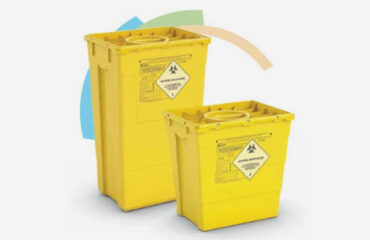Reclaim Waste for Dummies
Reclaim Waste for Dummies
Blog Article
Reclaim Waste - Questions
Table of Contents5 Simple Techniques For Reclaim WasteThe Best Strategy To Use For Reclaim WasteOur Reclaim Waste StatementsReclaim Waste Can Be Fun For EveryoneTop Guidelines Of Reclaim Waste
Discover the kinds, occurrences, and kinds of liquid waste. Residential sewage waste refers to the waste and items from a domestic septic container. This sort of waste is created by human beings in homes, schools, and various other buildings. This only consists of septic tanks that have a drain field. The appropriate management and disposal of residential sewage waste need liquid waste to be moved to a sewage therapy plant where the proper approaches and devices are related to purify and throw away waste.
Commercial waste usually includes possible dangers, such as flammable products or a mixture of liquid and strong waste items, and calls for a much more innovative and detailed disposal process. The disposal of industrial waste commonly involves the filtering of waste prior to transport to make sure risk-free and proper disposal. Hazardous waste is developed from results and drainage of industrial processes and production.
This sort of waste can not make use of the same sewage administration transport or procedures as septic or business fluids. The hazardous waste management process needs the examination and testing of liquid waste before it goes through the disposal procedure (industrial wastewater treatment). Runoff waste is the liquid waste that comes from drainage and excess stormwater in highly booming areas or cities
Overflow waste can cause contamination and flooding if not managed correctly. Guaranteeing proper waste management can protect against catastrophes and decrease environmental damage.
The Definitive Guide to Reclaim Waste
Contact PROS Solutions today to find out about our waste monitoring and disposal solutions and the proper means to care for the fluid waste you create.
(http://www.askmap.net/location/7161699/australia/reclaim-waste)This so-called 'wastewater' is not only an important resource yet, after treatment, will be released to our land, waterways or the ocean. Made use of water from commodes, showers, bathrooms, cooking area sinks, washings and industrial processes is recognized as wastewater.

water used to cool down equipment or tidy plant and tools). Stormwater, a kind of wastewater, is overflow that flows from farming and urban areas such as roofing systems, parks, yards, roadways, paths and seamless gutters right into stormwater drains pipes, after rain. Stormwater streams without treatment directly to local creeks or rivers, eventually reaching the ocean.
Getting The Reclaim Waste To Work
In Queensland, many wastewater is dealt with at sewage treatment plants. Wastewater is transferred from residential or industrial websites via a system of sewage systems and pump stations, recognized as sewerage reticulation, to a sewer treatment plant. City governments develop, preserve and run most sewage therapy plants. Operators are certified under the Environmental Defense Act 1994 to release treated wastewater at an acceptable environmental standard right into rivers.
The Division of Natural Resources recommends city governments regarding managing, operating and preserving sewerage systems and therapy plants. In unsewered locations, regional governments may require owners to mount specific or family sewage treatment systems to treat residential wastewater from toilets, kitchen areas, bathrooms and washings. The Department of Natural Resources authorizes using household systems when they are confirmed to be reliable.
In some new subdivisions, therapy of some stormwater to remove clutter, sand and gravel has actually begun making use of gross pollutant catches. Wastewater treatment takes place in four stages: Removes solid issue.
Wastewater then streams into big containers where solids clear up and are removed as sludge. Oil and residue are skimmed from the surface. Makes use of tiny living microorganisms called micro-organisms to damage down and eliminate remaining dissolved wastes and great particles. Micro-organisms and wastes are integrated in the sludge. Gets rid of nitrogen and phosphorus nutrients that could trigger algal blossoms in our waterways and endanger marine life.
The smart Trick of Reclaim Waste That Nobody is Discussing
Nutrient removal is not offered in any way sewage therapy plants because it requires pricey specialist devices. It is ending up being a lot more usual in Queensland. Clear fluid effluent generated after therapy might still consist of disease-causing micro-organisms. If this effluent is launched into waterways such as rivers or the sea, the micro-organisms will ultimately die out.

The majority of wastewater flows right into the sewerage system. Under the Act, regional governments provide authorizations and licences for ecologically relevant tasks (ERAs) entailing wastewater releases that could have a local influence.
The Definitive Guide for Reclaim Waste
Otherwise, samples are considered laboratory analysis. Usually numerous tests are required to establish the levels of each of the different contaminants such as oils, heavy steels and pesticides in water. Monitoring gives factual info concerning water top quality and can validate that licence problems are being index fulfilled. The info obtained with tracking supplies the basis for making water high quality choices.
Report this page